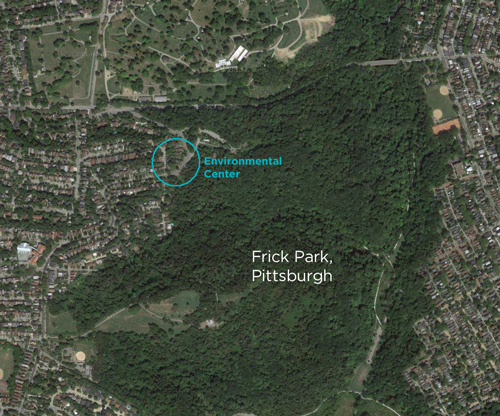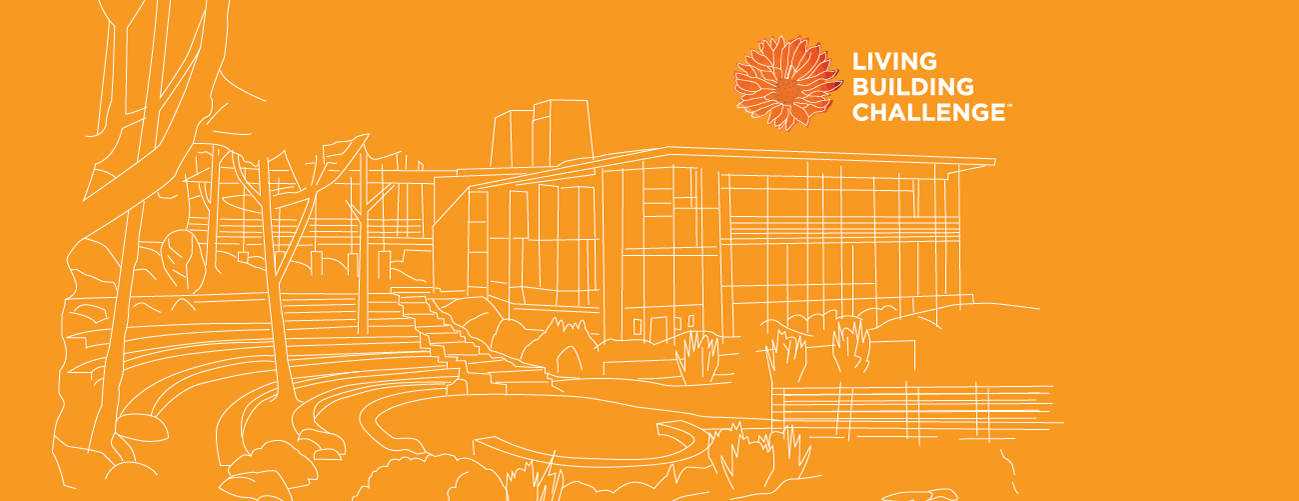Frick Environmental Center
The Pittsburgh Parks Conservancy, in partnership with the City of Pittsburgh, is building a new Environmental Center in Frick Park—Pittsburgh’s largest historic city park. The center and its surrounding landscape will provide educational spaces to demonstrate how humans can relate to the natural world in a healthier, more efficient, and more beautiful way. It serves as the starting point of an extensive 151-acre trail system used for educational programs and nature walks through the 561‐acre park.
The facility will include flexible indoor learning spaces, a reception area, public restrooms, storage and other facilities. The design also includes a redesigned entry drive and parking lot, restoration of the historic gatehouses and formal entrance landscape, an amphitheater, and improvements to the nearby meadow and woodlands. The project aims to meet the highest possible standards for sustainable design of both the built environment and the landscape, while simultaneously honoring the rich historic design of the park and the needs of current users.
evolveEA has been helping to guide the design team through the Living Building Challenge planning, design, and certification process. Many aspects of the center’s design combine strategies that holistically address its integration with the landscape. The parking area, for example, features permeable pavement and will be covered with trellises that hold solar panels to generate electricity for the center. With the goal of achieving a gold or platinum level LEED certification in addition to Living Building status, the Frick Environmental Center is likely to further advance Pittsburgh’s standing as a leading green city. And by continuing to expand its programming in environmental education, the Pittsburgh Parks Conservancy will use the new Environmental Center to impact young people throughout the region, especially the over 1.1 million residents who live within the ten-mile radius of Frick Park.
As a Living Building, the Frick Environmental Center’s design is responsive to its natural environment though sustainable landscape best practices. It is also designed to achieve Net Zero Energy, and to manage all storm and waste water on site while employing passive and hi-tech measures to maintain healthy indoor air quality, clean water, and comfortable lighting. Building materials include reused wood and other sustainably sourced items.

The Frick Park Ecosystem
The Park’s natural areas are largely wooded, hilly terrain that provide habitat for numerous mammals and migratory birds that require interior forest (Frick is the only park in the city’s system to have this ecological classification). Frick Park is also home to the recently completed 2.2 mile aquatic ecosystem restoration of Nine Mile Run, which is one of the largest urban stream restoration projects in the nation. Nine Mile Run is now home to 14 species of fish – a 280% increase since the restoration was completed. These habitats and ecosystems are unique for an urban area and provide unparalleled opportunity for hands‐on ecological investigations.


